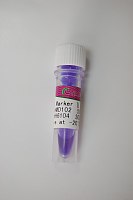Methods for the Detection of DNA Adducts
互联网
385
The detection and characterisation of DNA adducts can provide mechanistic information on mode of action for genotoxic chemicals and in this context is vital for human risk assessments. Adducts are measured extensively in biomonitoring studies to examine exposure to environmental, dietary, and occupational chemicals and as biomarkers of efficacy for cancer chemotherapeutic drugs and chemopreventive agents. Methods used for adduct analysis must possess a certain degree of specificity and be sufficiently sensitive to detect lesions in the model system under investigation. A variety of techniques have been established for this purpose, which are capable of detecting and quantifying adducts in DNA isolated from animal or human tissues, cells, and biofluids as well as naked DNA from in vitro studies. These can be grouped as those involving 32 P-post-labelling, mass spectrometry, physical detection methods, immunological assays and radiolabelled compounds. Each approach presents different advantages and limitations and the most appropriate method depends on the type of sample, level of damage, and nature of the investigation as well as practical considerations. In this chapter, the basic principles of the most commonly used quantitative methods are described and their strengths and weaknesses discussed.








